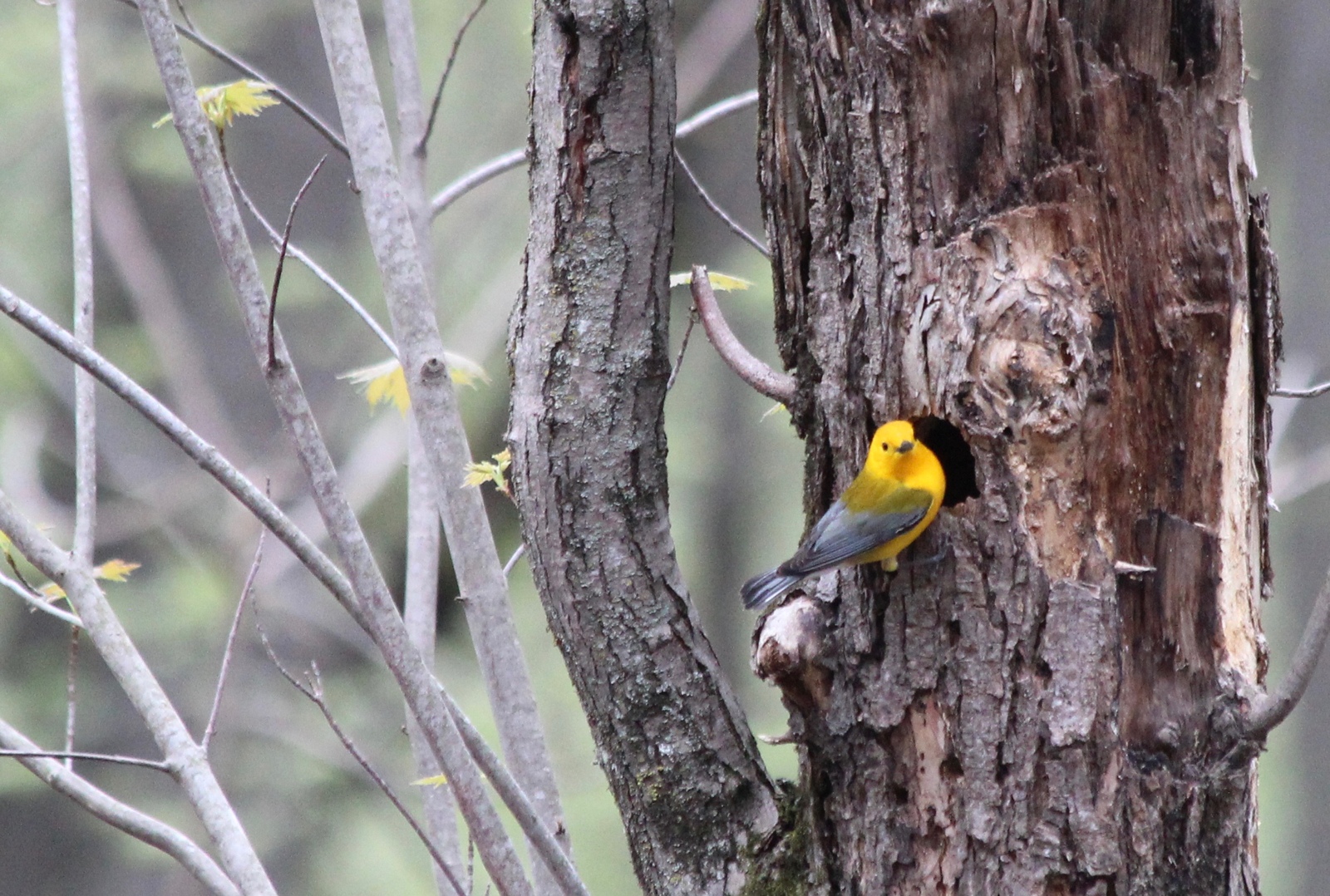
In 2024, Wild River State Park celebrated black bears and took steps to reduce human-bear conflict with great success. This year our focus shifts to the lives of woodpeckers. Seven distinct species can be found at Wild River. How many can you name? (See answer at end of article).
All woodpeckers share some common characteristics. They use strong beaks to search for food under bark and excavate holes in trees. Their tongues are sticky and so long that they wrap up around their skulls. Most birds have feet with three toes pointing forward and one pointing back, but woodpeckers are among a small number of birds with zygodactyl feet. Having two toes that point forward and two that point back helps with gripping and climbing trees, an activity that woodpeckers engage in regularly.
An exciting thing happened in 2024. (Spoiler alert, here comes one of the woodpecker names). Red-headed Woodpeckers moved in, and not just one or two, but a colony of 15-20. Young birds appeared, so they likely raised offspring in the park! Why is this exciting? Red-headed Woodpecker numbers have declined by 95% in Minnesota since 1967.
Wild River is undertaking a 10-acre oak savanna restoration, which happens to be a beloved plant community for Red-headed Woodpeckers. Oak savanna is also rare, covering only about 1% of its historic MN range. They nest in cavities in dead trees
and “flycatch” for insects in the open understory.
Next time you come to the park, look for them from the main park road between the trail center and visitor center turnoffs. During the summer, we’ll be offering Woodpecker Walk & Talks and evening programs about woodpeckers and oak savannas. These will be on the park’s event calendar.
(Now for the woodpecker names! Pileated, Yellow-bellied Sapsucker, Northern Flicker, Downy, Hairy, Red-bellied, and, of course, Red-headed.)








Comments
St. Croix 360 offers commenting to support productive discussion. We don’t allow name-calling, personal attacks, or misinformation. This discussion may be heavily moderated and we reserve the right to block nonconstructive comments. Please: Be kind, give others the benefit of the doubt, read the article closely, check your assumptions, and stay curious. Thank you!
“Opinion is really the lowest form of human knowledge. It requires no accountability, no understanding.” – Bill Bullard
4 responses to “Woodpecker year at Wild River State Park”
We were so excited to see our first red headed woodpecker this spring. We spent 5 years clearing buckthorn from our oak, maple basswood woodland and this was our reward. I hope the red headed woodpeckers stay around and nest here too.
I have been clearing 75 acres of buckthorn. It is a big undertaking, but the rewards of the flora and fauna that come back keeps me going!
I remember seeing Red-headed Woodpeckers as a kid in northwestern Minnesota and have wondered why we don’t see them now. Your article explaining the 95% decline since 1967 explains it. What a treat if they make a comeback! One of my favs!
cool article, also reminding us about the importance of big, old dead trees as habitat and food sources for so many critters, insects to birds to mammals. And, they contribute massively to healthy, biodiverse soil systems. Keep those old dead trees!